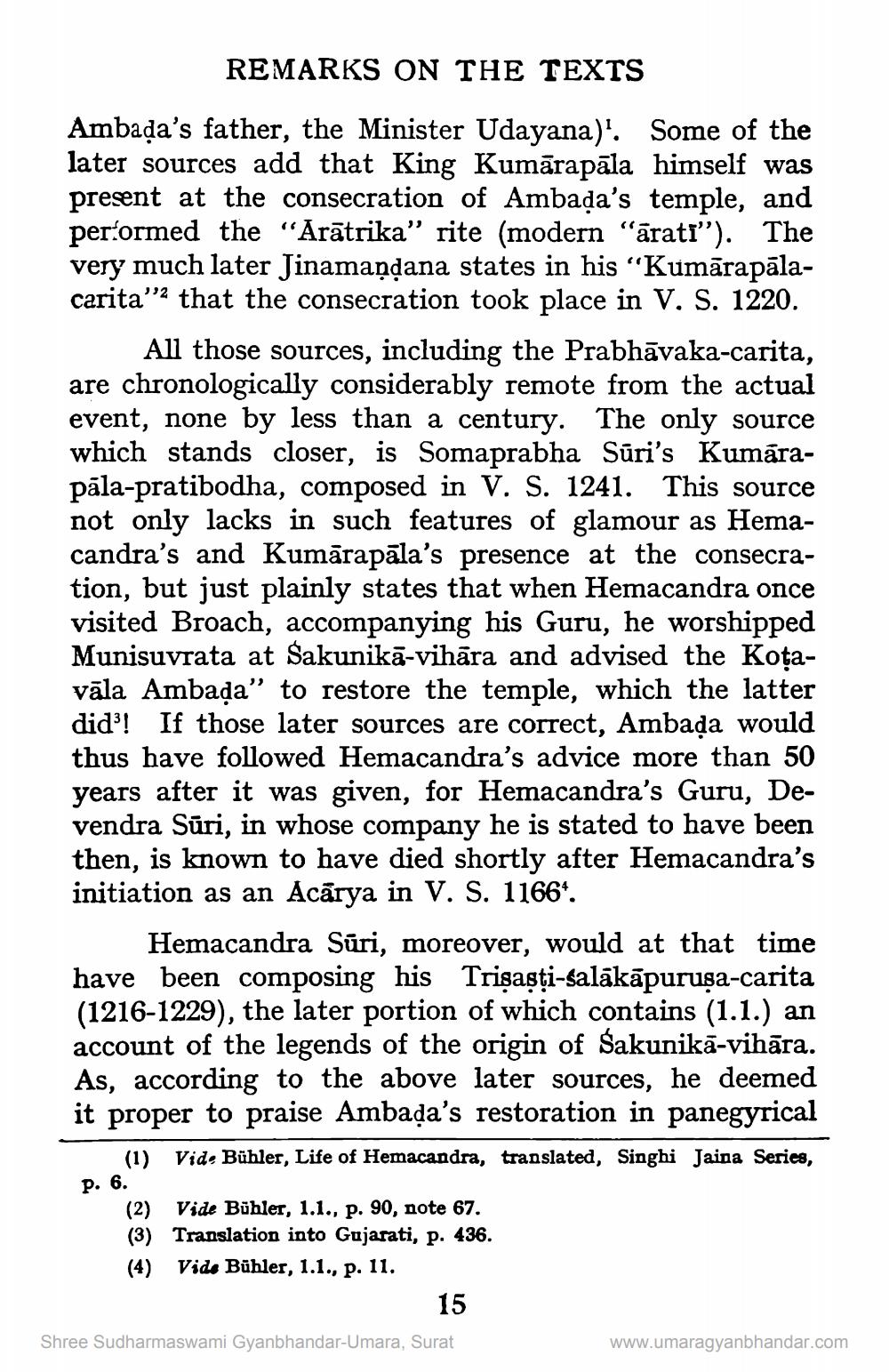________________
REMARKS ON THE TEXTS Ambada's father, the Minister Udayana). Some of the later sources add that King Kumārapāla himself was present at the consecration of Ambada's temple, and performed the “Ārātrika” rite (modern "ārati''). The very much later Jinamaņdana states in his "Kumārapālacarita"? that the consecration took place in V. S. 1220.
All those sources, including the Prabhāvaka-carita, are chronologically considerably remote from the actual event, none by less than a century. The only source which stands closer, is Somaprabha Sūri's Kumārapāla-pratibodha, composed in V. S. 1241. This source not only lacks in such features of glamour as Hemacandra's and Kumārapāla's presence at the consecration, but just plainly states that when Hemacandra once visited Broach, accompanying his Guru, he worshipped Munisuvrata at Sakunikā-vihāra and advised the Kotavāla Ambada" to restore the temple, which the latter did! If those later sources are correct, Ambada would thus have followed Hemacandra's advice more than 50 years after it was given, for Hemacandra's Guru, Devendra Sūri, in whose company he is stated to have been then, is known to have died shortly after Hemacandra's initiation as an Acārya in V. S. 1166*.
Hemacandra Sūri, moreover, would at that time have been composing his Trisasti-salākāpurusa-carita (1216-1229), the later portion of which contains (1.1.) an account of the legends of the origin of Sakunikā-vihāra. As, according to the above later sources, he deemed it proper to praise Ambada's restoration in panegyrical
(1) Vid. Bühler, Life of Hemacandra, translated, Singhi Jaina Series, p. 6.
(2) Vide Bühler, 1.1., p. 90, note 67. (3) Translation into Gujarati, p. 436. (4) Vide Bühler, 1.1., p. 11.
15
Shree Sudharmaswami Gyanbhandar-Umara, Surat
www.umaragyanbhandar.com




